Ramya, who has just finished her PhD from IISc, spent a week walking through Odisha villages on the ‘Shodh Yatra’, observing how local residents engage with science and tech

The Shodh Yatra is a walk organised twice a year through rural India, aimed at unearthing and disseminating grassroots knowledge and innovations. Ever since I found out about the yatra, I have wanted to go on one. Recently I had my chance: I had just completed my PhD and a few months of Research Associateship, and I was faced with long months of nothingness ahead of me. To my delight, I learned that the next Shodh Yatra would be organised in the summer of 2017. I read the announcement carefully. It said the maximum temperature on the journey was expected to be 45°C. (45!) It said that we would walk 18-22 km a day in the scorching heat. Could I manage that? Family and friends strongly dissuaded me with horrifying stories of dehydration. I called the organisers. Someone at the other end told me that foreigners were signing up. What did I mean by asking if I could bear the heat? Of course I could! His confidence and my eagerness to not miss this opportunity helped me make up my mind. I was going! I signed up and paid the registration fee in typical PhD style: on the day of the deadline.
I took a train from Bangalore to Chennai, another to Bhubaneswar, and a third to Barpali to join the 39th Shodh Yatra, organised by the Society for Research and Initiatives for Sustainable Technologies and Institutions (SRISTI), a voluntary organisation located in Ahmedabad. The yatra is organised twice a year with the help of the Honey Bee Network (a group of individuals and institutions who aim to document and share local traditional knowledge), covering a distance of 100-120 km in a remote rural district of India. The summer yatra happens in places of extreme heat and the winter ones in places that face extreme cold. This summer, the yatra was held in western Odisha during 11-17 May.
The Shodh Yatra aims to felicitate local innovators and traditional knowledge holders, promote traditional recipes and local biodiversity conservation, and conduct village meetings to know and understand local issues and problems. It also identifies centenarians, enterprising women and children, artisans, rural researchers and people contributing to the preservation of natural resources. It prepares registers of local knowledge and local plant diversities, promotes low-cost and sustainable agricultural technologies, and shares open-source information collected by SRISTI which may be of use to local people. To me, the yatra seemed to offer an experience I had longed for during my PhD, and I couldn’t wait to begin!
Our starting point was Barpali, a town in the north-western district of Bargarh, that owes its place in history to Gangadhar Meher – considered one of the greatest Odia poets. It is equally famous for its rich weaving tradition, and on the very first day of the yatra, a small conference of sorts was organised. We were fortunate to see several award-winning woven items, including a shirt that was not tailored, but woven seamlessly, and fabric that had Meher’s famous poems woven into it. We got a glimpse of the rhythmic Sambalpuri folk dance, enthusiastically performed by children from a local school, and sampled tasty food. The most popular stall was one by local women who made delicious local items that vanished in no time. (SRISTI specifically focuses on recipes which use rare, less known or forgotten plant produce.)
‘Explain general theory of relativity?’
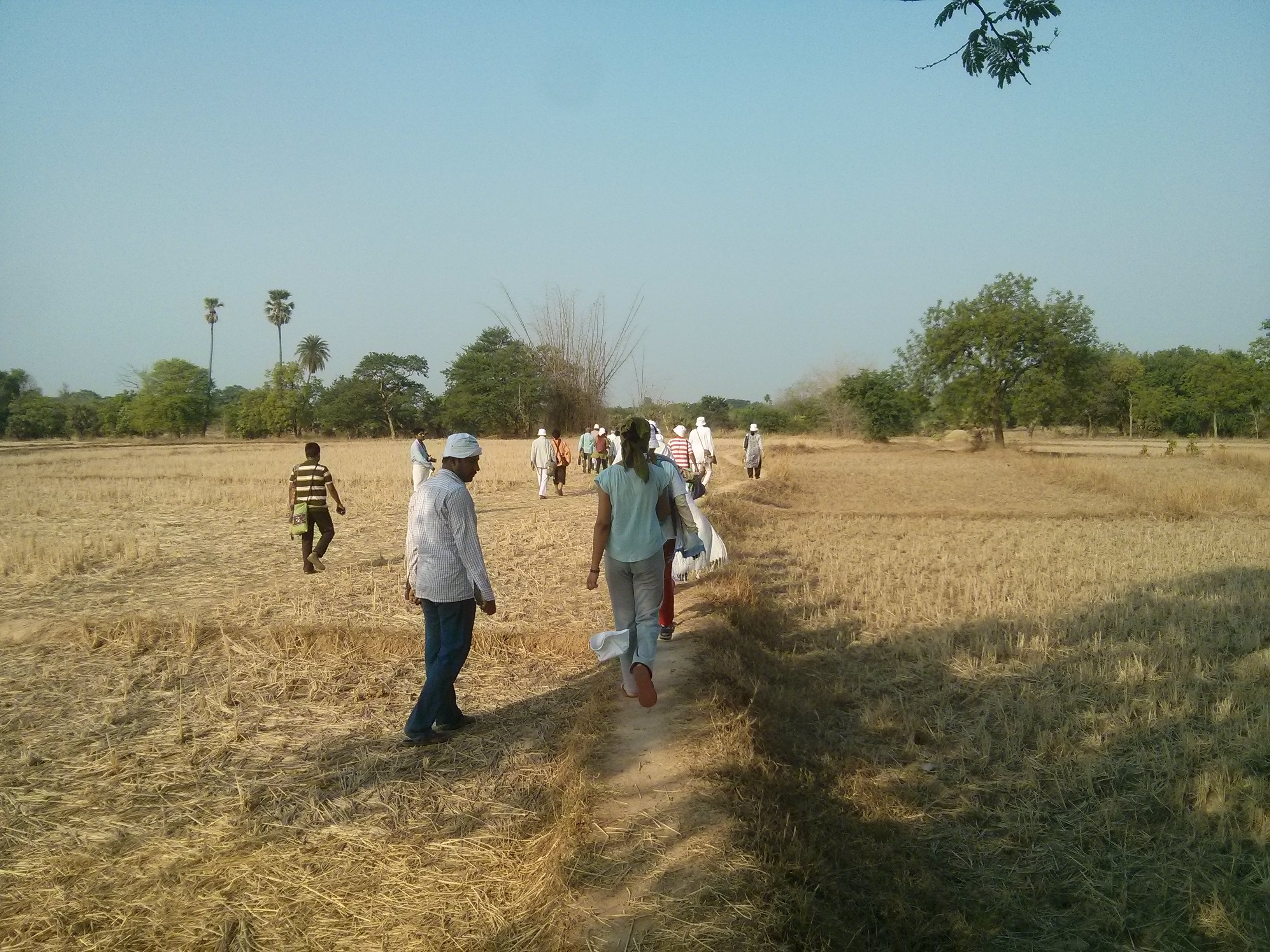
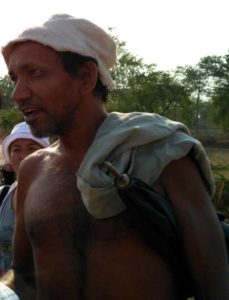
Over the course of the yatra, our pre-conceived notions about the local people were challenged. Take for example Bibasra, a man we met on the way to Rengalipali from Pada. He stopped someone from our team while we walked along the road to ask a question: “There are two fundamental forces: attraction and repulsion. We see many examples of attraction. Where can I see an example of repulsion? Is there research being done on repulsion? Can I see it somewhere?” After a while, he asked, “Can someone explain to me what this general theory of relativity is? I have been trying hard to understand but I am unable to. I would like someone to explain it to me.” He promised to show us a short cut through the fields, and we followed him, listening to all of the things he had wanted to ask and trying to answer them as best we could. People pointed to me and said, “Catch her. She is the scientist,” but I had to tell him the truth – I had no clue! I felt quite stupid. These were the things that Bibasra, the farmer, mused about as he toiled under the sun with his back bent over his work. We asked him why he did not pursue formal education. He told us he did get a job where he could have sat at an office in a comfortable place. But, he said, “If I don’t sit at that job, someone else will. Why not do agriculture? I like working on my land!”
When we got to the village of Rengalipali, where a 10-year-old showed us his homemade air conditioner created from a bucket of cool water and a ventilator fan, we also spotted an extremely old treasure in the hands of an 85-year-old sixth-generation healer. As we watched, he read out from these palm-leaf manuscripts several medicinal recipes. It was a sight to behold. He still treats patients that come to him and is a practicing ‘vaidya’. He also had a treasure of old medical book collections in Sanskrit and Odia, probably some of the last of their kind.
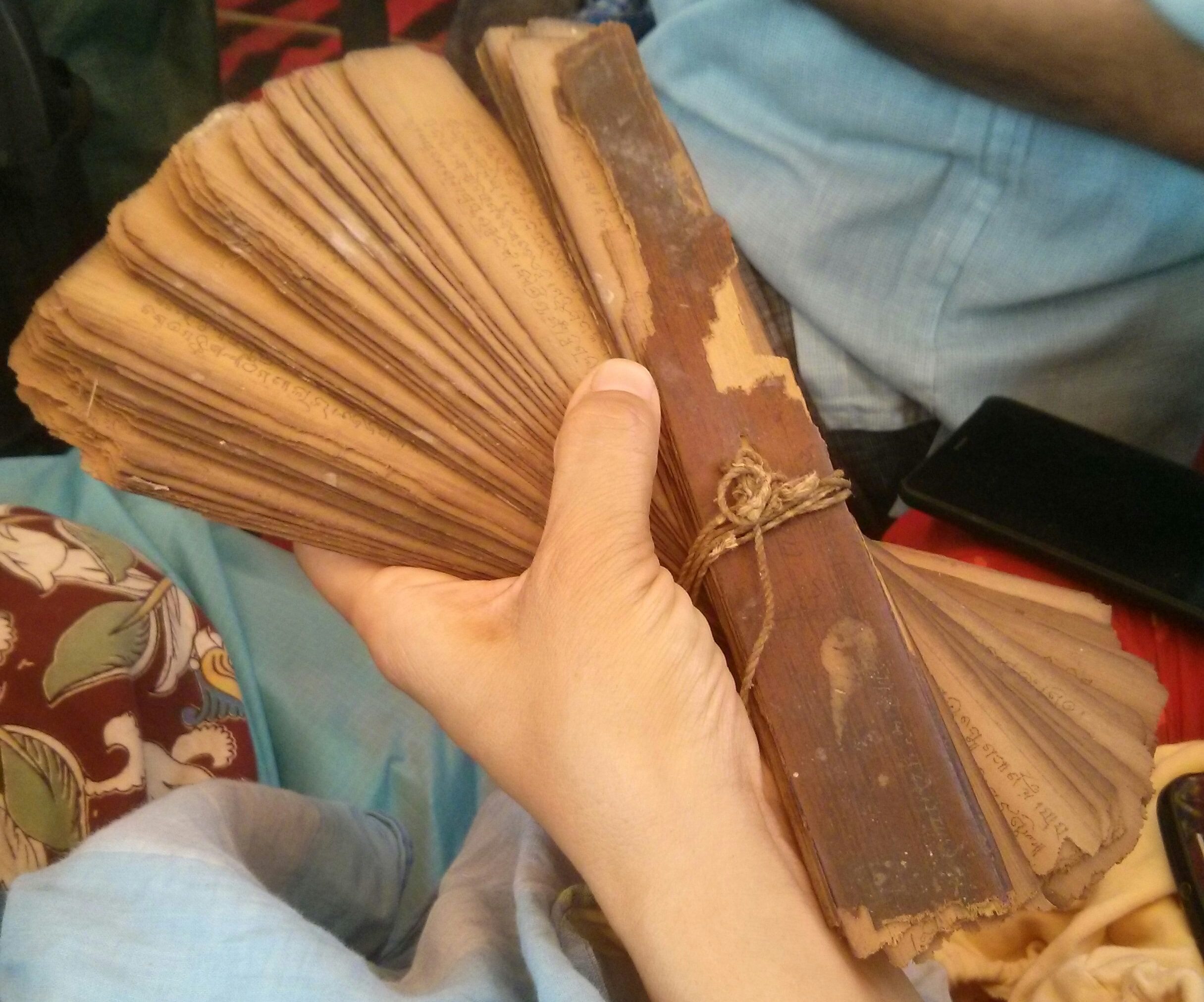
One interesting aspect I noticed on the yatra was that people married early, and consequently, were grandparents while still young, and helped bring up their grandchildren. It made me wonder about the ‘grandmother hypothesis’ and whether grandparents helping parents with raising children can have significant evolutionary consequences. Elsewhere on our journey, in the village of Sargibahal, a co-yatri asked why the women in this village were largely missing. She was told that they were out working in other states like Tamil Nadu as skilled labourers in weaving industries, while the men stayed back at home looking after the children and working the fields when conditions were suitable.
At Goibahali, we met a dynamic anganwadi worker who interacted with us for a long time. She told us that during training, workers were instructed that it was sufficient to breastfeed children until the age of one. But local mothers breastfeed their children even until 5 years of age. All the children we saw seemed healthy, despite the widespread poverty. For me, this was a great point to note – in the rush of modern urban life, perhaps we are missing out on a great resource for our children.
Local inventors
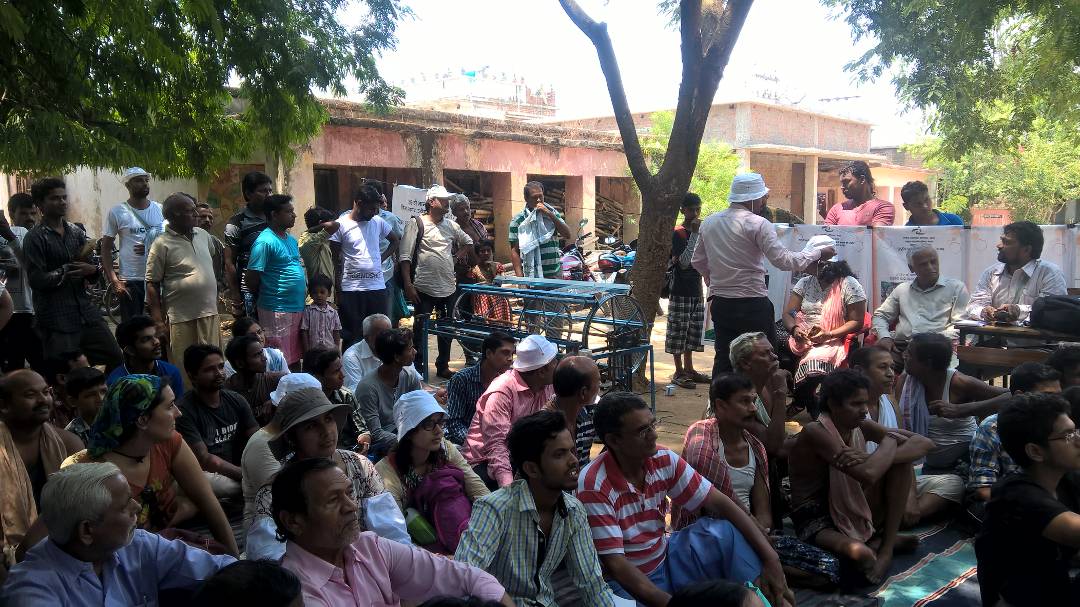
We were floored by some of the inventions and inventors we came across. At Bandapali on the first day of our yatra, we were introduced to a weaver named Ramprasad Mehr who had designed a warping machine that reduced the manual labour of counting threads and laying them out (which takes around eight hours). He created a device that could perform this task multiple times in six hours. Another friend of his, Prafulla Mehr, from the same village made a larger device that could perform the same task on an industrial scale. The first invention was meant to cater to women primarily employed in the time- and work-intensive process of laying out threads, which makes it difficult for mothers to find time for their children. Ramprasad has already sold many pieces in his district. When asked whether they would like to share this knowledge with the larger community, the innovators readily agreed, saying their intention was to help their fellow weavers. Anil Gupta, the brains behind the yatra, discussed with the participants the idea of making such innovations available under the Creative Commons license to prevent cheating and unfair commercial use by other companies, while freeing innovation from the burden of patents that stops its replication at the grassroots level.
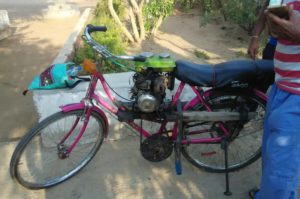
At Pada, our halt on the second night of our yatra, we met a man who had attached a motorcycle engine to a bicycle. The idea was to cycle when the going was easy and use the engine only when necessary. Even with the engine in complete use, he could still drive 60-70 km on a litre of fuel. He demonstrated the vehicle for us and it worked beautifully! I was really excited by this one.
The Lemon Tree Doctor
We came across farmers who had created exciting new agricultural hacks in response to particular problems that they faced. There was the paddy farmer from Gudarpali who accidentally discovered that the plant veru (Chloroxylon swietenia) could be used for pest control after the skin on his shoulder was burned by the sap oozing from the cut stems he was taking home. He thought if it could burn his skin, surely it could burn a worm’s skin too, and so, he used it on all his crops after mixing it with gomutra (cow urine). Another farmer from the village claimed that he used alcohol diluted with water for his crops, and it was yielding good results. Why did he use alcohol, we asked. “It works on people, so I thought, why not try it on plants?” he told us.
Perhaps one of SRISTI’s oddest finds is the farmer who grew lemon trees. They were badly affected by worms that would eat at their roots, most often killing them. There was no way to know which tree was afflicted and the worms were taking a toll on his business. One day, during a bout of illness, the doctor came to visit him with a stethoscope hanging around his neck and … eureka! He borrowed a stethoscope and went to his lemon tree. The moment he put his stethoscope to it he could hear scratching noises from the tree trunk. He dug up the roots and saw plump white worms eating away at the roots! Now, he’s known as the Lemon Tree Doctor, and his idea, like so many others, is being shared with fellow farmers through the Honey Bee Network.
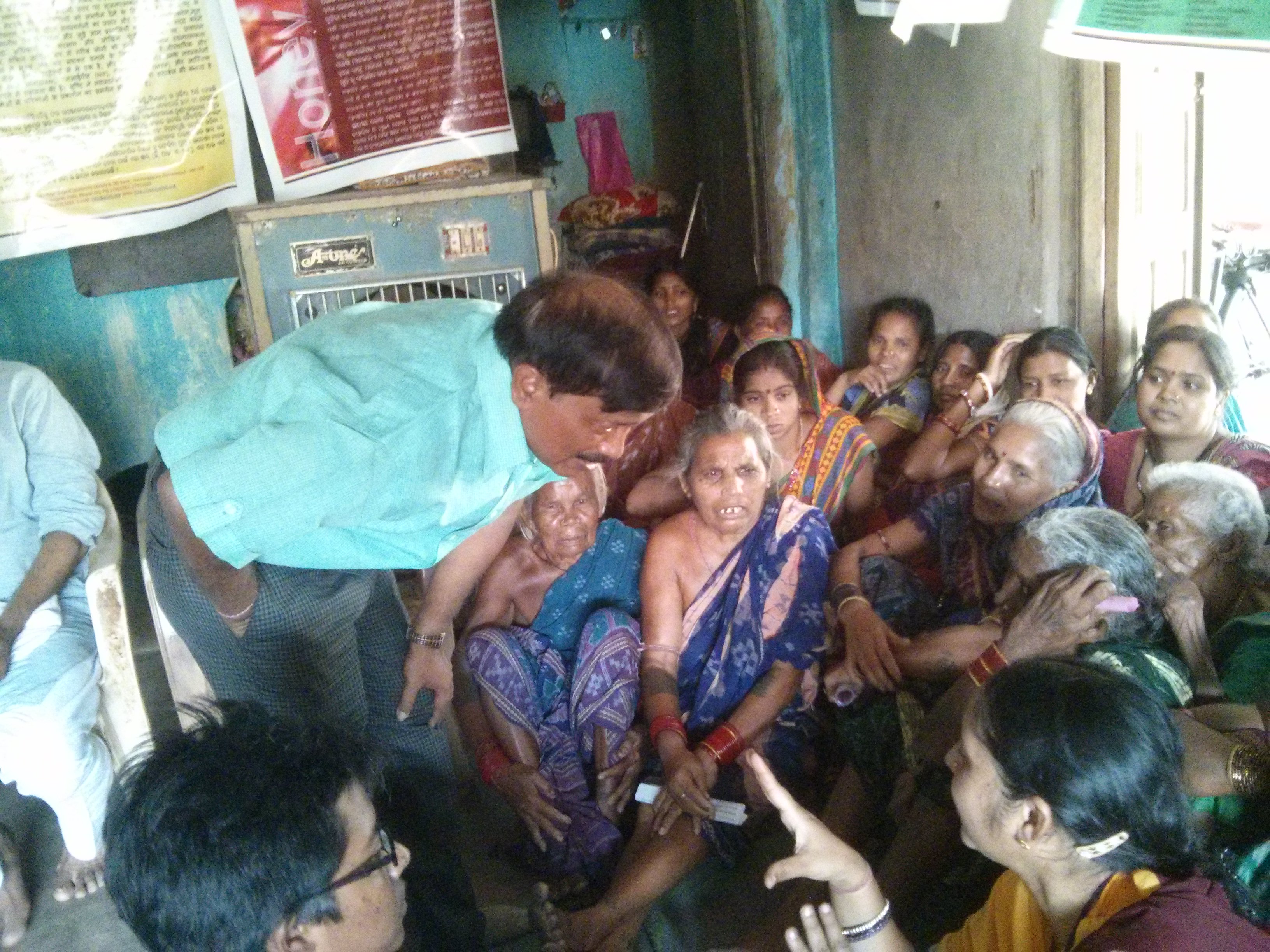
We also saw an example of an innovation spotted on a previous yatra being shared in Odisha. When the chatty anganwadi worker from Goibahali told us that farmers in the region weren’t able to harvest their groundnut crop on time because the lack of rain meant the soil was too hard, we were fortunate to have in our midst Amruthbhai, an innovator from Gujarat’s Saurashtra region. Groundnut is grown in arid loamy soils and it is necessary for the soil to be wet for them to be harvested. As Amruthbhai had faced the same problem, he had designed a machine to extract groundnuts from dry soil. It was an opportunity for us to see how the Honey Bee Network functioned: connecting people with similar problems from distant regions and spreading the knowledge from one to the other. Amruthbhai immediately agreed to send a model of the groundnut digger to Goibahali, where it would be tested for utility in the local conditions. If it is found to be satisfactory, this innovation will be procured by SRISTI for the village.
Smart villages
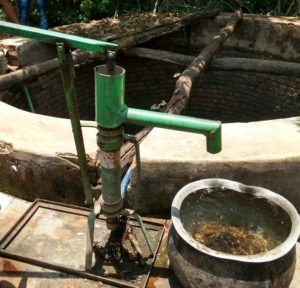
At Salepali, we met Sadhu Patel, a young innovator whose father had been one too. At a very young age, Sadhu was exposed to his father’s ways of tinkering about in the empty space in their backyard and was gradually drawn to it himself. His father had tried very hard to build a wooden tractor and had successfully built a wooden bicycle. One of his father’s innovations that Sadhu completed was a wooden petromax lamp. This lamp had a large cylinder to store a lot of kerosene and would glow throughout the night. It also had an adjustable wick which could be used to manage the flame and at its maximum, the flame was nearly a foot high. Sadhu’s pet project was the hand pump piston-handle unit that was used to pump water out of surface wells up to 50 ft deep. His unit could also be used to pump water from borewells to houses, even if the borewells were some distance away. His innovation was quite popular and Sadhu has already set this up at nearly 80 houses in his own village and supplied units elsewhere in his district.
We met a young boy at Telmaul Chowk who had designed a model for a smart city. It had several lovely features such as rainwater harvesting tanks where water would get stored and could be distributed across the city, as well as wastewater recycling units. It also had smart roads where houses and traffic signals would all be fitted with CCTVs. This was followed by a discussion amongst us on the possibility of smart villages (why do we always think that only cities can be smart?), and what this might entail.
During an idea competition at Karmelabahal, an eight-year-old had an idea for a new device. As she stood up to talk about it, mid-way through her first sentence, she began to cry. It was a moving sight. She wanted to design a machine that would have a rotating arm with a sponge at the end that could wash vessels to lessen the workload of her mother, who worked as a domestic help. She felt for her mother so much that she was overcome with emotion and couldn’t complete her first sentence, despite encouragement. She was led away while a discussion on how such a device can be easily built continued.
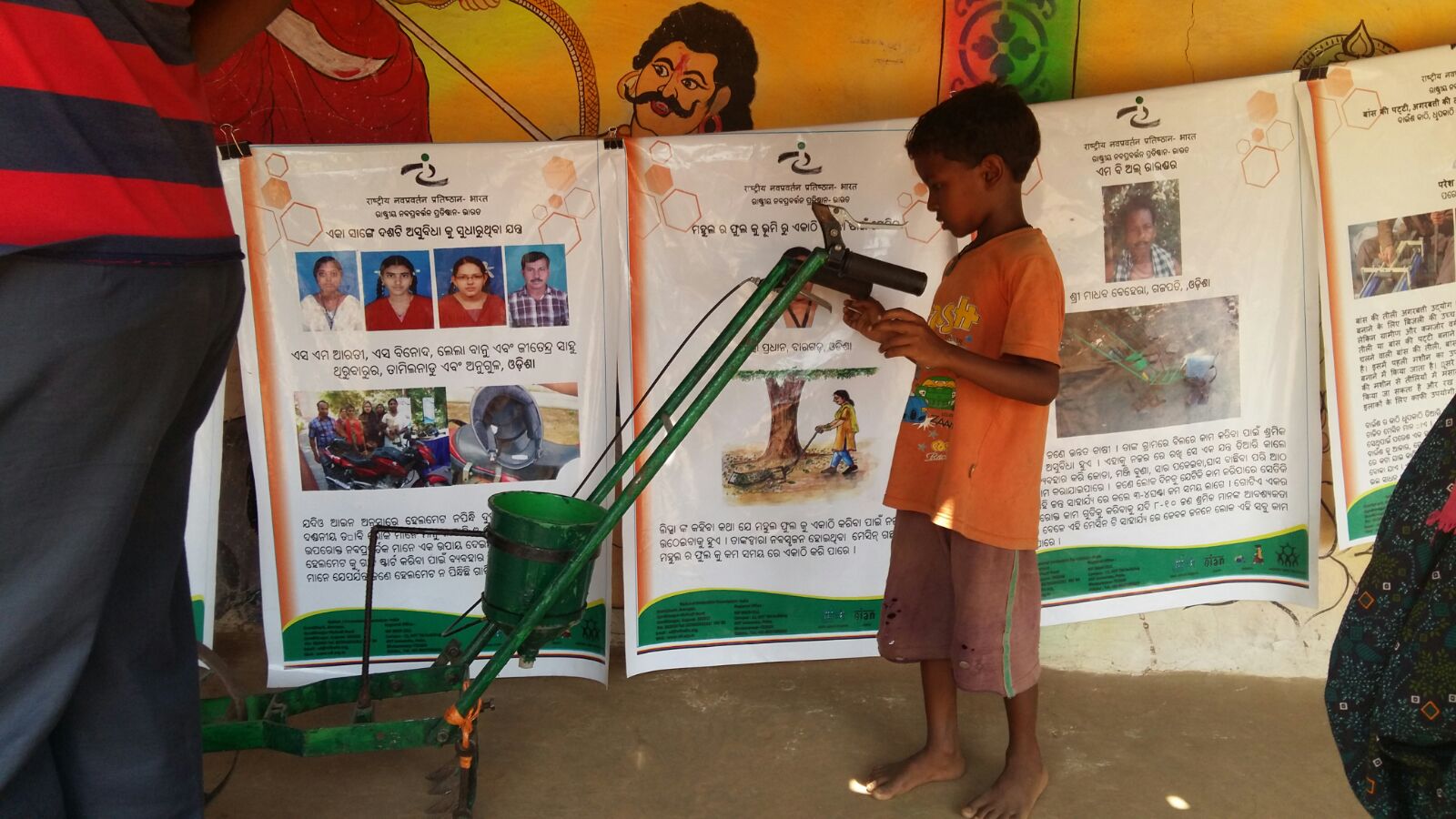
The highlight of our entire journey was meeting Dharamveer Kamboj, an innovator from Haryana, with whom SRISTI had once met and shared input, and who had an incredible rags-to-riches story. He was a rickshaw puller in Delhi when he met with an accident that forced him to return to his village, where he put his exposure to the big city to good use. He realised that primary farm produce was not as lucrative as processed food and immediately set to work on designing a juicer. He made one that could create juices out of various fruits. With the positive response his business was generating, he modified his juicer to make sure that fruits with large seeds could also be directly fed without coring them. In addition, he designed features such as a heating unit followed by one for condensation to distill essences out of herbs and flowers. In this way, he made gulaabjal, tulsi ras and many more essences. He now sells juices and essences manufactured at his industry, and is now a leading name in processing equipment. He owns a workshop and a processing unit where he employs more than 20 women. His machine won him a prestigious award for innovation and he spent two weeks at the Rashtrapati Bhavan.
SRISTI is in the process of compiling a knowledge database from all of the communities that they have visited over the years and a version of this is already available online. But my experiences on the yatra left me wondering: how many more Dharamveers are out there, yet to be discovered?
P Ramya Bala is a Research Associate at the Divecha Centre for Climate Change and enjoys nature-inspired writing.
The author would like to acknowledge Dr Balaram Sahu, SRISTI’s Odisha coordinator, and Pragna Rituparna, one of SRISTI’s organisers, for their help with details of names and places.




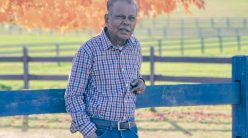
1 thought on “What I Learned Meeting Rural Innovators in Odisha”
Toilet stories – RumBall, PhD :D
(25 March 2018 - 12:29 am)[…] in the most recent 39th edition of the Shodh Yatra. More on what I learnt from the innovators here. We walked from Barpali to Nrusinghnath in the Bargarh district of Odisha and temperatures during our […]
Comments are closed.